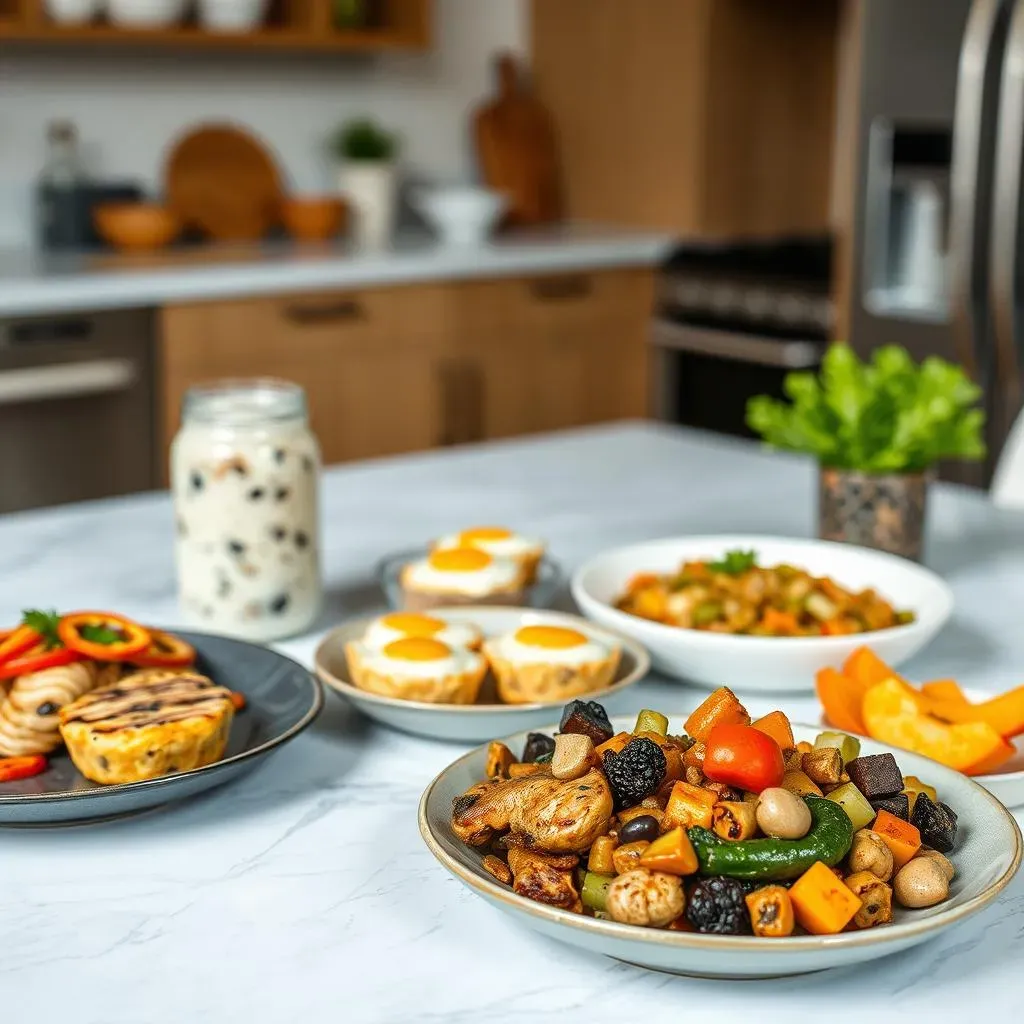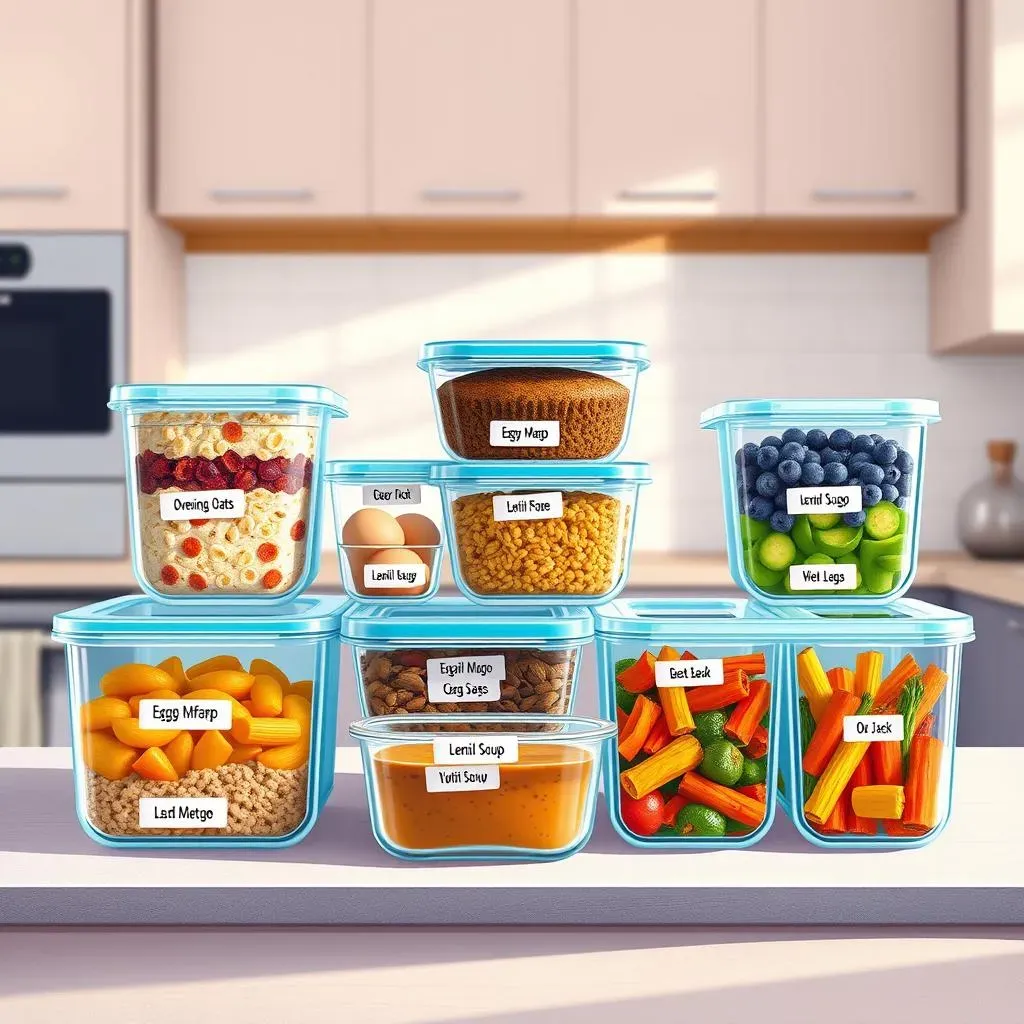Table of Contents
Living with diabetes doesn't mean sacrificing delicious food! In fact, with a little planning, you can enjoy tasty and healthy meals that support your well-being. This article is your guide to mastering "healthy meal prep ideas for diabetics," showing you how to create a week's worth of delicious, diabetes-friendly meals in advance. We'll explore the fundamentals of a diabetes-friendly diet, making sure you understand the principles behind healthy eating. Then, get ready to dive into a collection of simple, yet scrumptious recipes designed specifically for managing blood sugar levels. We'll cover everything from quick breakfast options to satisfying dinners, with plenty of tips and tricks to streamline your meal prep process. By the end, you'll feel confident creating a personalized meal plan that's both convenient and beneficial for your health. Let's make healthy eating easier and more enjoyable!
Understanding DiabetesFriendly Diets and Meal Prepping

Understanding DiabetesFriendly Diets and Meal Prepping
The Basics of Diabetes-Friendly Eating
So, you're diving into the world of diabetes-friendly eating? Great! The core idea is to keep your blood sugar levels stable. Think of it like a rollercoaster – you want a smooth ride, not a wild, jerky one. This means focusing on foods that release sugar slowly into your bloodstream, avoiding those sugar bombs that cause those dramatic spikes and crashes.
What does that mean in practice? It means prioritizing complex carbohydrates (like whole grains, fruits, and vegetables) over simple carbs (like white bread, sugary drinks, and processed foods). Complex carbs are like slow-release capsules of energy, while simple carbs are like instant energy drinks – a quick rush and then a crash.
Food Type | Diabetes-Friendly Choices | Foods to Limit |
|---|---|---|
Carbohydrates | Whole grains, fruits, vegetables | White bread, pastries, sugary drinks |
Protein | Lean meats, fish, beans, lentils | Processed meats, fatty cuts of meat |
Fats | Healthy fats (avocado, nuts, olive oil) | Saturated and trans fats |
The Importance of Portion Control
Even the healthiest foods can impact your blood sugar if you eat too much. Portion control is your secret weapon in managing diabetes. Think of it like this: even a small amount of gasoline can power a car, but too much will cause problems. Similarly, even healthy foods can cause problems if eaten in excess.
One helpful trick is using smaller plates. It's a simple visual cue that helps you eat less. Another is to carefully measure your portions, especially carbs, using a measuring cup or food scale – this helps you stay consistent and avoid overeating.
- Use smaller plates and bowls.
- Measure your food portions.
- Pay attention to your body's hunger cues.
- Don't be afraid to leave some food on your plate.
Meal Prepping for Diabetes Success
Meal prepping isn't just about saving time; it's about taking control of your health. When you prep your meals in advance, you avoid impulsive unhealthy choices. It's like having a personal chef who always makes healthy options available. Imagine having healthy, portioned meals readily available in your fridge, ready to grab and go.
Planning your meals ahead also allows you to make informed choices about portion sizes and nutrient content. It reduces the chances of grabbing something unhealthy when you're busy or tired. This consistent approach is key to long-term success in managing your diabetes and maintaining a healthy weight.
"The key is to make healthy eating a habit, not a chore. Meal prepping helps you do just that." - Anonymous Diabetes Educator
Delicious and Easy Healthy Meal Prep Recipes for Diabetics

Delicious and Easy Healthy Meal Prep Recipes for Diabetics
Quick & Easy Breakfasts
Let's face it, mornings can be hectic. A diabetes-friendly breakfast shouldn't add to the chaos. Think overnight oats! Combine rolled oats, chia seeds, unsweetened almond milk, and a sprinkle of cinnamon in a jar the night before. In the morning, you've got a ready-to-eat, fiber-rich breakfast that will keep you full and energized. Add some berries for extra flavor and antioxidants – delicious!
Another winner? Egg muffins! Whisk eggs with chopped veggies (like spinach, peppers, and onions), bake in muffin tins, and you've got grab-and-go protein powerhouses. These are super versatile; you can customize them with different veggies and spices to keep things interesting. They’re also great for meal prepping – make a batch on Sunday and you’re set for the week!
Breakfast Idea | Ingredients | Benefits |
|---|---|---|
Overnight Oats | Rolled oats, chia seeds, almond milk, cinnamon, berries | High in fiber, slow-release energy |
Egg Muffins | Eggs, vegetables, spices | High in protein, customizable |
Satisfying Lunches
Lunchtime shouldn't be a battle against hunger. A big salad with grilled chicken or fish is a fantastic diabetes-friendly option. Load it up with leafy greens, colorful veggies, and a light vinaigrette. Pre-cook your protein and chop your veggies ahead of time to make assembly a breeze. This is a great way to get a good balance of protein and healthy fats, which will keep you feeling full and satisfied.
Another great option? Lentil soup! Lentils are packed with fiber and protein, making them a blood sugar-friendly superstar. Make a big batch on the weekend and portion it out for easy lunches. Add some whole-grain bread for a more complete meal. You can also get creative with your spices and add different vegetables to each batch to avoid getting bored with the same old soup.
- Chicken or fish salad with mixed greens
- Lentil soup with whole-grain bread
- Quinoa salad with roasted vegetables
Dinner Delights
Dinner doesn't have to be complicated to be delicious and diabetes-friendly. Sheet pan dinners are your new best friend! Toss chicken breast, broccoli florets, and bell peppers with olive oil, herbs, and spices, and roast on a sheet pan. Easy cleanup and a balanced meal in one go! The best part? You can easily swap out the veggies and protein to keep things exciting. One week it could be chicken and broccoli, the next it could be salmon and asparagus.
Another simple yet satisfying option is baked salmon with roasted vegetables. Salmon is rich in omega-3 fatty acids, which are beneficial for overall health. Pair it with roasted vegetables like asparagus, Brussels sprouts, or sweet potatoes for a nutrient-packed meal. These meals are also great for leftovers – pack them up for lunch the next day!
"Healthy eating doesn't have to be boring. Experiment with different flavors and textures to find what you enjoy." - Registered Dietitian
Tips and Tricks for Successful Healthy Meal Prepping for Diabetics

Tips and Tricks for Successful Healthy Meal Prepping for Diabetics
Planning is Key: Your Weekly Meal Map
Before you even think about chopping veggies, grab a pen and paper (or open your favorite planning app!). Creating a weekly meal plan is the cornerstone of successful meal prepping. This isn't about rigid rules; it's about a flexible framework. Think about your schedule, your preferences, and what you already have in your pantry. Try to incorporate a variety of foods to ensure you're getting all the nutrients you need. Don't forget to include leftovers for lunch the next day – less cooking for you!
Once you have a plan, create a shopping list. This prevents impulse buys and ensures you have all the ingredients you need. Shopping with a list not only saves you time but also helps you stick to your budget. Think of it as a treasure map to healthy eating – follow it, and you’ll find your meals are easier to manage.
Day | Breakfast | Lunch | Dinner |
|---|---|---|---|
Monday | Overnight Oats | Leftover Chicken and Veggie Sheet Pan Dinner | Salmon with Roasted Asparagus |
Tuesday | Egg Muffins | Lentil Soup | Sheet Pan Chicken and Broccoli |
Wednesday | Overnight Oats | Leftover Salmon and Asparagus | Chicken Stir-fry with Brown Rice |
Smart Storage for Long-Lasting Freshness
Proper storage is crucial for keeping your prepped meals fresh and safe. Invest in airtight containers – they're your best friends in the fight against food waste and bacterial growth. Label everything with the date to avoid any confusion and to ensure you use up older meals first. This will help you to avoid food waste and keep your meals fresh for longer. It’s also a good idea to store your meals in the refrigerator or freezer as soon as they’ve cooled down to ensure they stay safe and tasty.
Consider using freezer-safe containers for meals you plan to freeze. Freezing allows you to prepare large batches in advance and have healthy meals ready whenever you need them. Just remember to thaw them properly before eating – avoid leaving them at room temperature for extended periods. Portioning your meals into individual containers also helps with portion control and makes grabbing a healthy lunch or dinner a breeze.
- Use airtight containers.
- Label and date all containers.
- Store meals properly in the refrigerator or freezer.
- Thaw frozen meals properly before eating.
- Portion meals into individual containers.